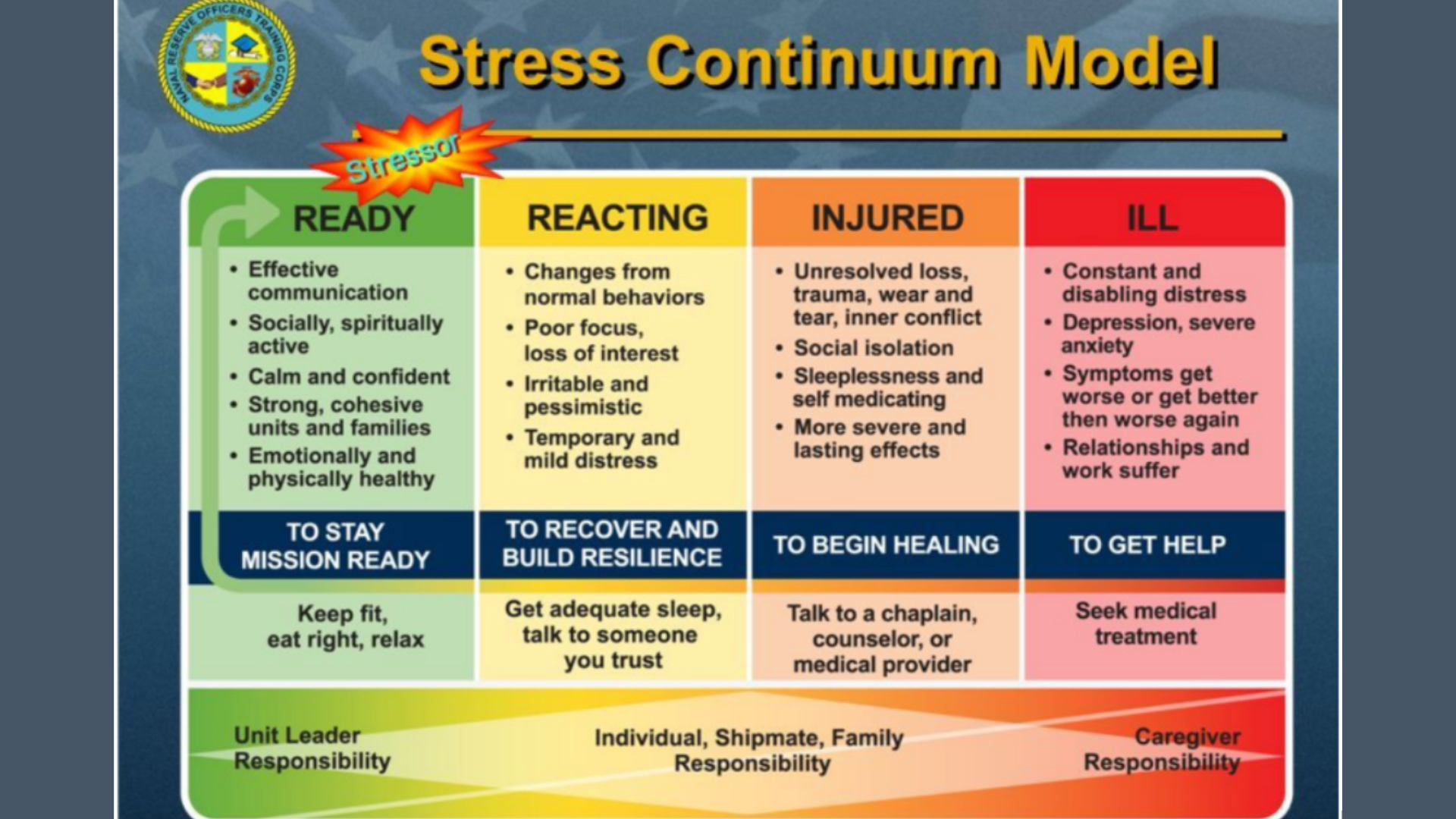Navigating the Stress Continuum: A Framework for Organizational Wellness
In the fast-paced world of program delivery and incident management, the toll on both personal and organizational health is undeniable. At Cornerstone Safety Group, we understand the rewarding yet exhausting nature of the work you do as a travel and experiential education organization.
While perseverance and dedication are commendable qualities, it's crucial to recognize the impact of stress on individuals and teams. In this article, we delve into the Stress Continuum model as a valuable tool for assessing and addressing stress within the travel and experiential education industries.
Understanding the Stress Continuum:
The Stress Continuum is a tool utilized to help understand the stress level within ourselves, our colleagues, and those we’re close to. It utilizes a color-coding system, It begins with the simple adoption of a Red-Yellow-Green, as a framework for describing an individual’s current stress level. Cornerstone utilizes this framework to help organizations and its leadership engage in self-reflection and develop strategies to support employee wellness particularly during periods of high-stress.
Stress and Stress Reactions:
Stress, defined as a state of mental or emotional strain resulting from adverse or demanding circumstances, trigger stress reactions. These reactions are normal, expected, and predictable, such as a fight-or-flight response to a significant stressor. However, stress reactions shouldn't linger after an event. There should be periods that allow the mind and body to return to its normal condition. When the body remains in stress response and is unable to return to a normal state, such as periods of sustained peak-season demands, stress responses can create physical and emotional injuries. This is why recognizing and addressing stress reactions is crucial for maintaining personal and organizational well-being. The Stress Continuum provides a common language and system to identify stress injuries and their impact on ourselves and our colleagues.
The discussions about stress, coping, and how employees are expected to navigate it at work should happen before an impending crisis. In fact, proactive stress management is a crucial part of developing an organizational culture that responds well in crises.
Building an Organizational Culture:
Establishing a supportive community, both personally and professionally, is the foundation of a resilient organizational culture. Identifying individuals who can be contacted when feeling overwhelmed or hopeless is important. Fostering professional trust and empathy, normalizing conversations about emotional well-being during staff hiring, onboarding, and coaching sessions, are all vital to a resilient organization.
How? Prioritize and utilize the Stress Continuum within your team before you or anyone else enters the “red zone.”
Theory & Preparation for Support:
The Stress Continuum offers a structured approach to support at three levels—self, others, and organization. By implementing these principles, organizations can create a culture that promotes well-being and resilience.
Establish Safety:
Create a safe environment within your organization in terms of people, their jobs, and their physical surroundings.
Remain transparent about organizational stability, help employees understand how their role supports the organizational mission, and ensure staff feel secure in their position.
Connection:
Cultivate relationships within the organization to create a support network.
Designate mentor or buddy systems for regular check-ins, connecting staff to professional resources.
Self-Efficacy:
Empower individuals to feel in control of their career path and professional advancement.
Encourage problem-solving and involve staff in decision-making processes.
Hope:
Share stories of impact and discuss the future with a positive outlook.
Publicly recognize individual and team contributions, offer ongoing professional development opportunities, and involve staff in organizational decision-making relevant to their role.
Cornerstone Safety Group invites organizational leaders and managers to embrace the Stress Continuum model as a transformative tool for enhancing well-being in the travel and experiential education industries. By understanding stress, implementing supportive strategies, and fostering a culture of connection, self-efficacy, and hope, we can build resilient organizations that thrive in the face of challenges. Join us on this journey towards organizational wellness and create a workplace where everyone can flourish.
Ready to schedule a Stress Continuum training for your team? Reach out at info@cornerstonesafetygroup.org, or, if you’re a member, make a training request in your Resource Library.



